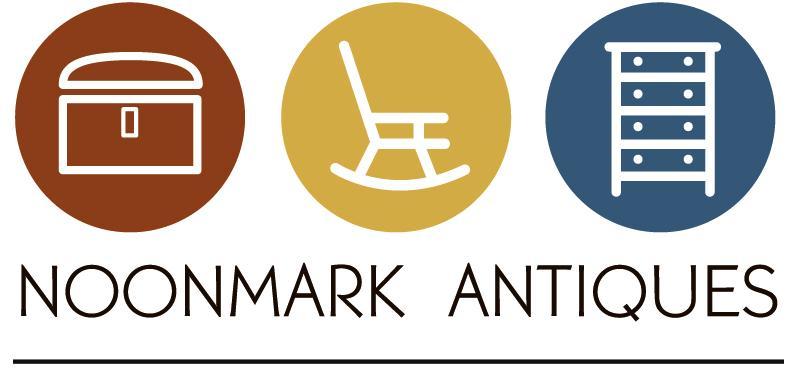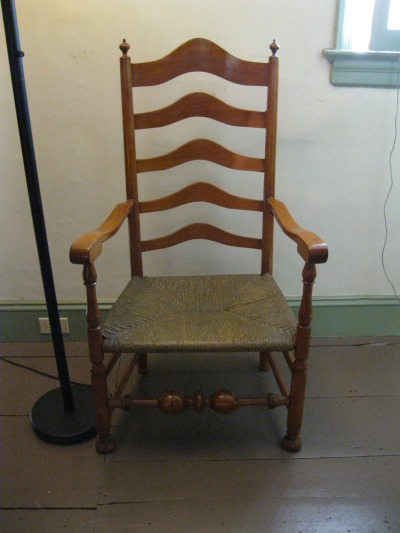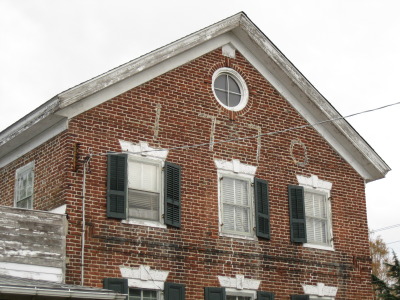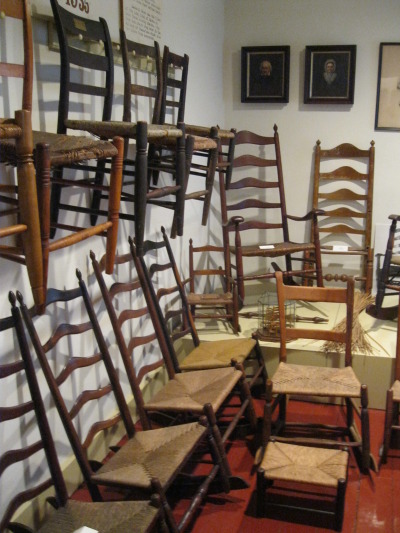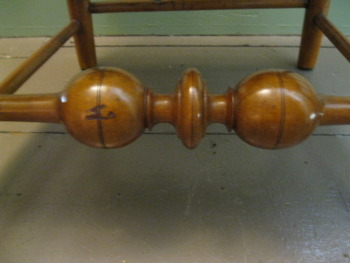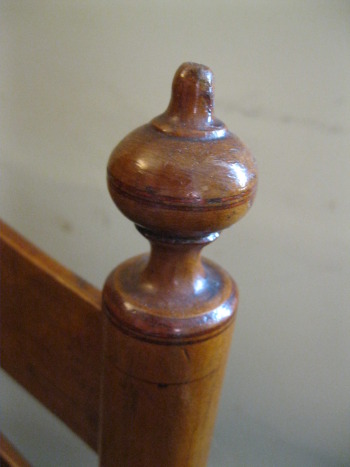Ware chair at the Smith Cadbury Mansion in Moorestown, New Jersey
As I travel through various regions of our country, I often wonder about the early settlers, how they survived and who contributed to the earliest material culture. I am always delighted when I eventually discover an individual or families who created useful yet beautiful articles for daily living. Two years ago, I was researching the William Diamond redware pottery of Salem, New Jersey for a client. After leaving Salem, Charlie and I drove through Roadstown, a crossroads in Salem County. We happened upon a house with ‘1770’ brickwork in the gable. I wondered about this house for at least 2 years until I recently discovered the answer.
This year, we took our annual Black Friday pilgrimage to South Jersey to get away from it all and decided to visit Greenwich. The Cumberland Historical Society was open for tours and a very helpful docent gave us an excellent tour of the Gibbon House Museum. At the end of the tour, I found some useful books.
Sara Carlisle Watson wrote an interesting and practical little book on the Ware chairmaking family of southern New Jersey. The Ware family made turned, slat backed, rush bottomed (AKA ladderback) chairs continuously in the same style for 150 years. A room in the Gibbon Museum is completely dedicated to Ware family chairs.
Cumberland County Historical Society ~ Gibbon House Museum
Ware chair room at the Gibbon House Museum
Maskell Ware ( 1766-1846) was the patriarch of this family industry. His great grandfather Joseph Ware ( 1650-1711) arrived in America in 1675 along with John Fenwick’s group of hardy souls, looking to establish a thriving town on the banks of the Salem River, a tributary of the Delaware River. Maskell’s grandfather John Ware ( 1688-1734) moved to Cohansey, New Jersey, most likely due to his religious conviction to follow George Keith.
Elnathan Ware ( 1729? - ?) Maskell’s father, apprenticed Maskell at the age of 14 to chairmaker John Laning. Laning’s chairmaking shop was located on Ye Great Road in Greenwich, New Jersey. It is quite possible John Laning learned his trade from master craftsman William Savery of Philadelphia. Thus, a high quality skill crossed the river and established itself in a then thriving community. Greenwich and Salem were busy port towns which resulted in a practical need for seating. Maskell and his sons, grandsons, and eventually great grandsons all provided for this need.
The extended Ware Family lived throughout Salem and Cumberland Counties. The original homestead was a total of 16 acres in Roadstown where Maskell and his wife Hannah raised 11 children, 7 boys and 4 girls. All the children were expected to help with the chairmaking process. 5 of the boys opened shops of their own. Grandsons and great grandsons continued chairmaking operations in the old tradition until 1934 when great grandson George Sloan Ware retired.
As for the house with 1770 bricked into the gable? This home was owned by David Bowen the last royal sheriff of Cumberland County. Eventually, Charles Ware ( 1828-1979), grandson of Maskell, owned this home and set up a chairmaking shop on the premises.
Chairmaking process: Maskell chose swamp maple, which was indigenous to the region, for the posts, slats, and rungs. However, more creative sons and grandsons would also choose cherry, walnut, chestnut, and even osage orange wood, which is yellow in color. The turnings on the posts and rung were fashioned by a foot powered lathe. Eventually, a small gas engine was added to the lathe, but, this was the only concession to modern technology.
The rush bottom seat was constructed of meadow grass gathered from the nearby tidal marshes. The grass grew to a height of 3 feet. It had a blade of 3 sides which gave it strength and durability. The grass was gathered and hauled to a site for drying and then cured in a barn until it was ready to be used for weaving. All the children learned how to weave and this skill was maintained by the girls as well as the boys, and was especially useful for seat repair.
Meadow grass growing in the marshlands along the Cohansey River in Greenwich, New Jersey
I asked the docent at the Gibbons House how I could determine a Ware family chair since none of them were ever signed. Here is a list of points that might contribute to Ware chair attribution.
1) Posts usually of maple
2) Diameter of legs and back posts: 1”- 1 ¼”
3) Design of the finials: globe shaped by Maskell, elongated finial by his sons – however, grandsons were known to make globe shapes to recreate their grandfather’s design
4) Front rung turning: bold globe and ring by Maskell
5) Walnut rockers were constructed in such a way that they could attach to any Ware chair
6) Scribe lines encircle the posts where the slats are connected
Bold front rung turning
Finial and scribe line around the post.
See our Furniture Gallery for a Ware Rocking Chair available for purchase. http://noonmarkantiques.com/furniture/ware-ladderback-rocking-chair/
The Cumberland County Historical Society is located on Ye Greate Street in Greenwich, NJ. The tour cost $3.00 and for us, lasted at least an hour ( we had many questions)
Children might enjoy this tour. There is a very fine permanent Civil War exhibit on the second floor. The town is interesting in a quiet way, as if frozen in time. It sits on the beautiful serpentine Cohansey River. Two marinas are close by.
